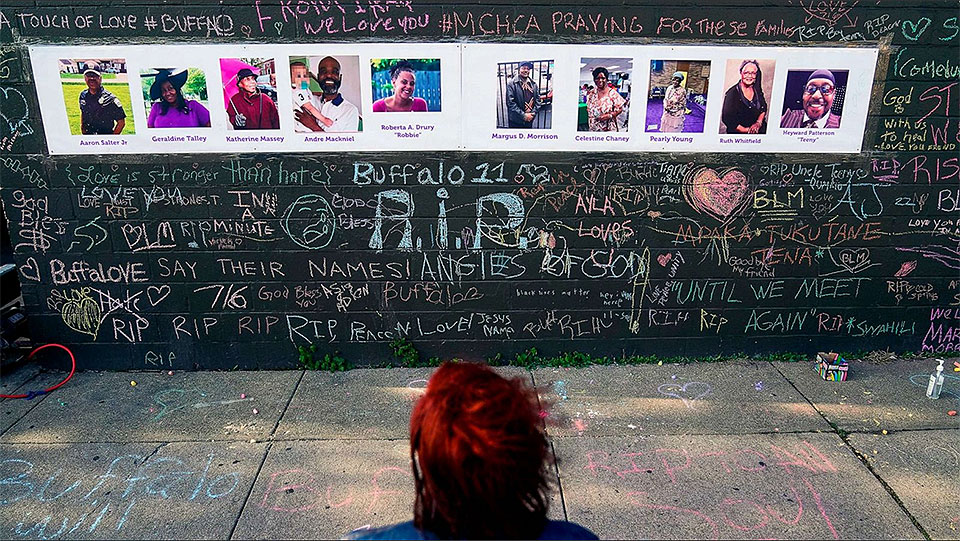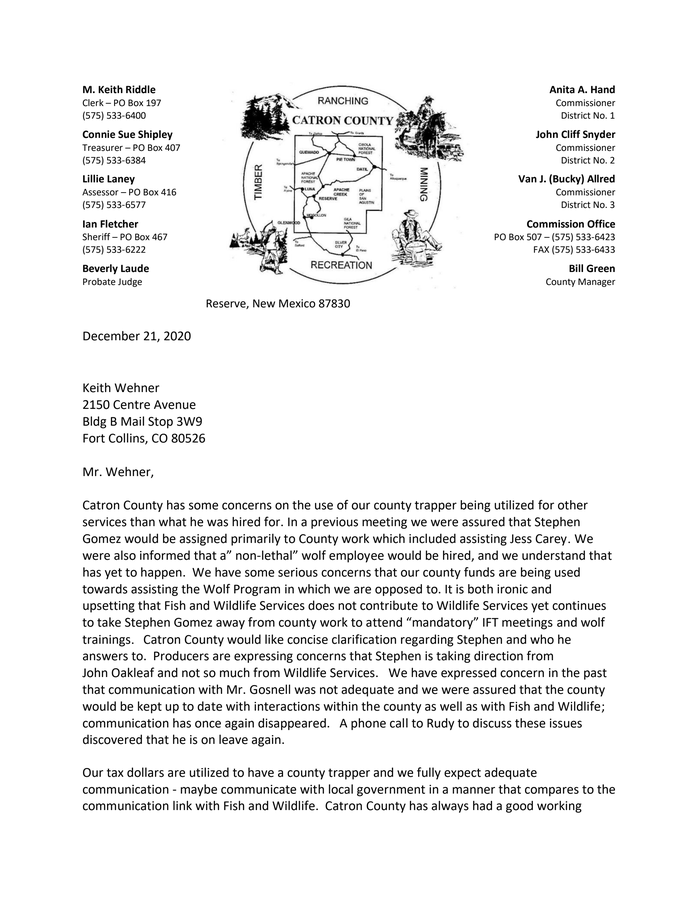
THE MEDIA TODAY
By Jon Allsop, CJR
Historians and journalists: In 2018, the historian Danielle McGuire wrote for CJR making the case that journalists should be sure to properly credit historians. “The relationship between historians and journalists can be beautifully symbiotic, providing a larger platform for historians’ work and a grounding for journalists’ own reporting,” McGuire wrote. “So when other writers, bloggers, and public figures take historians’ work, including our analysis, framing, and argument—our intellectual property—and present it as an ‘untold’ story or readymade fact, we feel that without reference or attribution it is not translation. It is presenting our work as their own.”
History and journalism: Responding to the Haiti debate, Michael Socolow, an academic at the University of Maine, made the case that journalists and historians don’t understand each other, before re-upping an article that he wrote in 2019, also for CJR. “As a journalist involved in real time during a historic event, and as a trained historian, I’ve come to believe that neither endeavor possesses a narrative validity, or even specific intrinsic value, that the other lacks,” Socolow wrote at the time. “An excellent journalist might be a terrible historian—but that shouldn’t devalue their journalism. A respected historian might very well produce fine scholarship without understanding news.”
Haiti and the press: Recently, CJR’s Feven Merid went deep on the deadly risks faced by journalists in Haiti. In three years, “six journalists have been killed in Haiti,” Merid reported: Pétion Rospide in June 2019, Néhémie Joseph that October, Diego Charles in June 2021, and, recently, Wilguens Louissaint and John Wesley Amady this January. In late February, a journalist named Maxihen Lazzare was killed by police while covering factory workers on strike.” (I also wrote about press threats in Haiti last year.)
MAY 24, 2022
THIS STORY
“HAITI’S LOST BILLIONS.” “The Root of Haiti’s Misery: Reparations to Enslavers.” “How a French Bank Captured Haiti.” “Invade Haiti, Wall Street Urged. The US Obliged.” “Demanding Reparations, and Ending Up in Exile.” These were the top headlines in a sprawling package of articles—totaling tens of thousands of words and written primarily by four reporters, with the help of more than a dozen researchers in at least six locations on two continents—that the New York Times published on Haiti over the weekend, under the rubric “The Ransom.” The package took the form of a slick multimedia production online and a special section in print, trailed on Sunday’s front page across four columns under a large illustration of plantations burning during the Haitian Revolution, when enslaved Africans won independence from French colonial rule.
Though the events of the illustration date to 1791, the package really picks up Haiti’s story in 1825, more than twenty years after it declared independence, when the French returned and demanded that Haiti give them “reparations” or else face a war, setting the stage for decades of debt and exploitation. “For years, as New York Times journalists have chronicled Haiti’s travails, a question has hovered: What if? What if the nation had not been looted by outside powers, foreign banks and its own leaders almost since birth? How much more money might it have had to build a nation?” the paper asked. “For more than a year, a team of Times correspondents scoured long-forgotten documents languishing in archives and libraries on three continents to answer that question, to put a number on what it cost Haitians to be free.” The paper concluded—and fourteen experts agreed—that the payments have cost Haiti at least twenty-one billion dollars in lost growth, and quite possibly much more. The Times described the story as a whole as “rarely taught or acknowledged,” and claimed that “leading historians” viewed its efforts to calculate the payments as “a first.” Monica Drake, a Times editor, described the package as “investigative journalism, the documents are just really old.”
Related: The bot that saw the Times
Alongside the package, the Times published at least two articles explaining how it came together, one of which offered an extensive, though not exhaustive, methodology and bibliography that itself came to five thousand or so words. “Newspapers don’t normally do this,” Catherine Porter, a reporter on the series, said, “but we thought it was important.” The paper is also now running a live blog detailing the international reaction to, and impact of, the package. A French bank highlighted by the Times as having exploited Haiti said that it would hire researchers to investigate its history in the country, with the head of its parent company decrying “a very sad illustration of the meaning of colonization.” The Times also relayed reaction in Haiti—where radio hosts discussed the package at length and a leading newspaper splashed the findings on its front page—and across the diaspora. The paper translated the package into both French and Haitian Creole, explaining that the latter step, a first for the Times, was particularly significant given the language’s dominant yet often stigmatized status in Haiti. It published a piece about the reaction under the headline, “Haitian Creole Speakers Welcome ‘The Ransom’ Translation.”
Interestingly, the Times’ reaction blog also noted less positive reactions to the package among some historians, who took issue not with its historical content but with the way it was framed—arguing, in essence, that the paper presented the roots of Haiti’s present-day poverty as a mystery that its reporters had just solved, without giving sufficient credit to the many historians, many of them people of color, who’ve been researching the topic for years. The Times quoted Mary Lewis, a Harvard historian who said that the paper hadn’t credited her for putting the paper in touch with sources, and Paul E. Cohen, a University of Toronto historian who noted, among other observations, that the paper’s bibliography was partial and framed “in a way that functions to legitimate the journalists’ claims about the originality and importance of their work.” The Times pointed in response to the extensiveness of the bibliography and the uniqueness of its calculation. (Interestingly, the paper also noted, some way into the package, that the total figure it reached was “surprisingly close” to the very precise amount that Jean-Bertrand Aristide, a former Haitian president, demanded in reparations in 2003, before he was ousted by France and the US.)
Like most historical discussions themselves, the debate as to how journalists ought to credit historians (and vice versa) is not new. (Indeed, the Times described its package as having “rekindled” the debate.) Views on the matter conflict sharply, but it strikes me that a case-by-case approach is probably best, with the extent of attribution owed depending on factors such as the terms on which a given historian has agreed to engage with a given journalist, the originality of the former’s thesis, and the centrality thereof to the latter’s article. Very deeply reported work—a standard to which we should all aspire—is usually the tip of an iceberg of detail that would, if included, often serve to weigh down narrative structure and even basic factual clarity, doing the reader a disservice. As various observers have pointed out, academic-style citations typically aren’t tenable in journalism. Still, there are ways, these days, for journalists to ensure at least a degree of attribution—like hyperlinks, as my CJR colleague Mathew Ingram pointed out in this hyperlinked tweet—that don’t infringe on their precious copy. Ironically, the Times’ bibliography laudably went far beyond this bare minimum, and it’s a little baffling to me, given its existing level of detail, why it didn’t carry on to cite every source the Times consulted. (The Times also deserves to be lauded, to an extent, for quoting some of its critics’ tweets, especially in light of its recent, dismissive-sounding stance on online feedback. But I digress.)
If all this ties into a much broader industry debate about attribution to experts, it also ties into long-standing industry gripes about the Times, specifically, and its track record of prominently crediting the work of other journalists, with something like them at issue again here; Michael Harriot, for example, pointed to his past coverage for The Root headlined “As Haiti Burns, Never Forget: White People Did That.” Politico’s Jack Shafer tweeted yesterday that “the genuine scrimmage isn’t journalists vs. historians but the New York Times vs. everybody else,” elaborating in a column that “no subject exists or matters until it receives the Times treatment—that’s the paper’s code. The Haiti package is only the latest expression of this mindset.” (Though Shafer, too, noted that broader industry dynamics are at play here.)
As I see it, the most interesting and complicated issue at stake here doesn’t involve the relationship between historians and journalists, but between history and journalism, as disciplines. The former, fundamentally, is seen as being expansive and about the past, whereas the latter concerns what’s new, often tied to a rigid “news peg”; their demands are different and thus rightly draw on different practices, as I wrote eighteen months ago, amid another Times-driven controversy. But the two disciplines aren’t conceptually separable either, given how deeply the past informs—or should inform—our understanding of the present, and excellent journalism can form a bridge between the two, as the Times itself did with its “1619 Project” asserting the centrality of slavery to the American story. Even that project had a peg—the four hundredth anniversary of the first enslaved Africans arriving in Virginia—but it didn’t claim to be new scholarship, as Nikole Hannah-Jones, its lead journalist, noted over the weekend. What the project achieved, she said, was helping to usher a particular “understanding into the culture.”
It seems to me that we have to work to do, as an industry, to better define the boundaries of this type of engagement. As various journalists argued with regard to the Haiti package, the idea that a story must say something new in order to be “news,” while generally a good principle, is inflexible as a hard rule. At the very least, we could expand our definition of the news peg beyond new facts, seeing broad current problems as an opportunity to scrutinize how they came to be. The Haiti package certainly does contain some important new facts, but its much greater service, in my view, lies in focusing global attention on a shameful chapter of history with an ongoing legacy that many readers don’t understand. (Old facts are usually new to someone.) The package’s more sweeping claims of originality, in this light, weren’t just contrived, but also unnecessary. We need more nuanced understandings of how to slot the past into our present stories, beyond mirroring round-number dates and straining the boundaries of novelty.
As a global and growing news juggernaut, the Times, perhaps more than any other outlet, has the resources to commit to seriously ambitious historical storytelling, and the reach to put it in front of readers and open up debates, both old and new. With that global dominance, though, should come a responsibility to be a generous and humble steward of such debates. Again, the bibliography the Times published here was a step toward that. But it’s not a misunderstanding that the way it presented the package rankled so many people to such an extent.
If there’s a timing problem with the Haiti package, it isn’t any want of a current news peg, but the fact that it’s taken so much time for such a clear-eyed way of seeing the legacies of slavery and colonialism to routinely get such extensive treatment—and here, the Times is not a lone offender. The originality framing “is not only not true, but also allows the NYT to be self-satisfied that it’s doing ‘incredible work.’ It means you don’t ask ‘what took you so long?’” Kendra Pierre-Louis, a former Times journalist who is now at Gimlet, wrote over the weekend. “What took them so long is white supremacy. White supremacy is why we expect a Black country founded in revolution and self-determination to be poor, so predominantly white institutions don’t have to look at how they helped create that poverty.”
Below, more on the Times and Haiti:What’s new and what’s not: In his Substack newsletter, Jonathan M. Katz, who has written about Haiti extensively, assessed what about the Times’ package is actually new information and weighed the critical reaction to it. “At the risk of a little Timesian bothsidesing, I think both camps have a point,” Katz concludes. “The package did cover a lot of very old ground, a lot of which is presented as if it is new. There’s a lot of ‘rarely taught or acknowledged,’ ‘the Times reveals,’ etc., about things that have been known and talked about by millions of people for decades. But there is value in making this story more widely known in France and the United States. And moreover, there is important reporting that many people who think they know the story are missing.”
THIS STORY
“HAITI’S LOST BILLIONS.” “The Root of Haiti’s Misery: Reparations to Enslavers.” “How a French Bank Captured Haiti.” “Invade Haiti, Wall Street Urged. The US Obliged.” “Demanding Reparations, and Ending Up in Exile.” These were the top headlines in a sprawling package of articles—totaling tens of thousands of words and written primarily by four reporters, with the help of more than a dozen researchers in at least six locations on two continents—that the New York Times published on Haiti over the weekend, under the rubric “The Ransom.” The package took the form of a slick multimedia production online and a special section in print, trailed on Sunday’s front page across four columns under a large illustration of plantations burning during the Haitian Revolution, when enslaved Africans won independence from French colonial rule.
Though the events of the illustration date to 1791, the package really picks up Haiti’s story in 1825, more than twenty years after it declared independence, when the French returned and demanded that Haiti give them “reparations” or else face a war, setting the stage for decades of debt and exploitation. “For years, as New York Times journalists have chronicled Haiti’s travails, a question has hovered: What if? What if the nation had not been looted by outside powers, foreign banks and its own leaders almost since birth? How much more money might it have had to build a nation?” the paper asked. “For more than a year, a team of Times correspondents scoured long-forgotten documents languishing in archives and libraries on three continents to answer that question, to put a number on what it cost Haitians to be free.” The paper concluded—and fourteen experts agreed—that the payments have cost Haiti at least twenty-one billion dollars in lost growth, and quite possibly much more. The Times described the story as a whole as “rarely taught or acknowledged,” and claimed that “leading historians” viewed its efforts to calculate the payments as “a first.” Monica Drake, a Times editor, described the package as “investigative journalism, the documents are just really old.”
Related: The bot that saw the Times
Alongside the package, the Times published at least two articles explaining how it came together, one of which offered an extensive, though not exhaustive, methodology and bibliography that itself came to five thousand or so words. “Newspapers don’t normally do this,” Catherine Porter, a reporter on the series, said, “but we thought it was important.” The paper is also now running a live blog detailing the international reaction to, and impact of, the package. A French bank highlighted by the Times as having exploited Haiti said that it would hire researchers to investigate its history in the country, with the head of its parent company decrying “a very sad illustration of the meaning of colonization.” The Times also relayed reaction in Haiti—where radio hosts discussed the package at length and a leading newspaper splashed the findings on its front page—and across the diaspora. The paper translated the package into both French and Haitian Creole, explaining that the latter step, a first for the Times, was particularly significant given the language’s dominant yet often stigmatized status in Haiti. It published a piece about the reaction under the headline, “Haitian Creole Speakers Welcome ‘The Ransom’ Translation.”
Interestingly, the Times’ reaction blog also noted less positive reactions to the package among some historians, who took issue not with its historical content but with the way it was framed—arguing, in essence, that the paper presented the roots of Haiti’s present-day poverty as a mystery that its reporters had just solved, without giving sufficient credit to the many historians, many of them people of color, who’ve been researching the topic for years. The Times quoted Mary Lewis, a Harvard historian who said that the paper hadn’t credited her for putting the paper in touch with sources, and Paul E. Cohen, a University of Toronto historian who noted, among other observations, that the paper’s bibliography was partial and framed “in a way that functions to legitimate the journalists’ claims about the originality and importance of their work.” The Times pointed in response to the extensiveness of the bibliography and the uniqueness of its calculation. (Interestingly, the paper also noted, some way into the package, that the total figure it reached was “surprisingly close” to the very precise amount that Jean-Bertrand Aristide, a former Haitian president, demanded in reparations in 2003, before he was ousted by France and the US.)
Like most historical discussions themselves, the debate as to how journalists ought to credit historians (and vice versa) is not new. (Indeed, the Times described its package as having “rekindled” the debate.) Views on the matter conflict sharply, but it strikes me that a case-by-case approach is probably best, with the extent of attribution owed depending on factors such as the terms on which a given historian has agreed to engage with a given journalist, the originality of the former’s thesis, and the centrality thereof to the latter’s article. Very deeply reported work—a standard to which we should all aspire—is usually the tip of an iceberg of detail that would, if included, often serve to weigh down narrative structure and even basic factual clarity, doing the reader a disservice. As various observers have pointed out, academic-style citations typically aren’t tenable in journalism. Still, there are ways, these days, for journalists to ensure at least a degree of attribution—like hyperlinks, as my CJR colleague Mathew Ingram pointed out in this hyperlinked tweet—that don’t infringe on their precious copy. Ironically, the Times’ bibliography laudably went far beyond this bare minimum, and it’s a little baffling to me, given its existing level of detail, why it didn’t carry on to cite every source the Times consulted. (The Times also deserves to be lauded, to an extent, for quoting some of its critics’ tweets, especially in light of its recent, dismissive-sounding stance on online feedback. But I digress.)
If all this ties into a much broader industry debate about attribution to experts, it also ties into long-standing industry gripes about the Times, specifically, and its track record of prominently crediting the work of other journalists, with something like them at issue again here; Michael Harriot, for example, pointed to his past coverage for The Root headlined “As Haiti Burns, Never Forget: White People Did That.” Politico’s Jack Shafer tweeted yesterday that “the genuine scrimmage isn’t journalists vs. historians but the New York Times vs. everybody else,” elaborating in a column that “no subject exists or matters until it receives the Times treatment—that’s the paper’s code. The Haiti package is only the latest expression of this mindset.” (Though Shafer, too, noted that broader industry dynamics are at play here.)
As I see it, the most interesting and complicated issue at stake here doesn’t involve the relationship between historians and journalists, but between history and journalism, as disciplines. The former, fundamentally, is seen as being expansive and about the past, whereas the latter concerns what’s new, often tied to a rigid “news peg”; their demands are different and thus rightly draw on different practices, as I wrote eighteen months ago, amid another Times-driven controversy. But the two disciplines aren’t conceptually separable either, given how deeply the past informs—or should inform—our understanding of the present, and excellent journalism can form a bridge between the two, as the Times itself did with its “1619 Project” asserting the centrality of slavery to the American story. Even that project had a peg—the four hundredth anniversary of the first enslaved Africans arriving in Virginia—but it didn’t claim to be new scholarship, as Nikole Hannah-Jones, its lead journalist, noted over the weekend. What the project achieved, she said, was helping to usher a particular “understanding into the culture.”
It seems to me that we have to work to do, as an industry, to better define the boundaries of this type of engagement. As various journalists argued with regard to the Haiti package, the idea that a story must say something new in order to be “news,” while generally a good principle, is inflexible as a hard rule. At the very least, we could expand our definition of the news peg beyond new facts, seeing broad current problems as an opportunity to scrutinize how they came to be. The Haiti package certainly does contain some important new facts, but its much greater service, in my view, lies in focusing global attention on a shameful chapter of history with an ongoing legacy that many readers don’t understand. (Old facts are usually new to someone.) The package’s more sweeping claims of originality, in this light, weren’t just contrived, but also unnecessary. We need more nuanced understandings of how to slot the past into our present stories, beyond mirroring round-number dates and straining the boundaries of novelty.
As a global and growing news juggernaut, the Times, perhaps more than any other outlet, has the resources to commit to seriously ambitious historical storytelling, and the reach to put it in front of readers and open up debates, both old and new. With that global dominance, though, should come a responsibility to be a generous and humble steward of such debates. Again, the bibliography the Times published here was a step toward that. But it’s not a misunderstanding that the way it presented the package rankled so many people to such an extent.
If there’s a timing problem with the Haiti package, it isn’t any want of a current news peg, but the fact that it’s taken so much time for such a clear-eyed way of seeing the legacies of slavery and colonialism to routinely get such extensive treatment—and here, the Times is not a lone offender. The originality framing “is not only not true, but also allows the NYT to be self-satisfied that it’s doing ‘incredible work.’ It means you don’t ask ‘what took you so long?’” Kendra Pierre-Louis, a former Times journalist who is now at Gimlet, wrote over the weekend. “What took them so long is white supremacy. White supremacy is why we expect a Black country founded in revolution and self-determination to be poor, so predominantly white institutions don’t have to look at how they helped create that poverty.”
Below, more on the Times and Haiti:What’s new and what’s not: In his Substack newsletter, Jonathan M. Katz, who has written about Haiti extensively, assessed what about the Times’ package is actually new information and weighed the critical reaction to it. “At the risk of a little Timesian bothsidesing, I think both camps have a point,” Katz concludes. “The package did cover a lot of very old ground, a lot of which is presented as if it is new. There’s a lot of ‘rarely taught or acknowledged,’ ‘the Times reveals,’ etc., about things that have been known and talked about by millions of people for decades. But there is value in making this story more widely known in France and the United States. And moreover, there is important reporting that many people who think they know the story are missing.”
Historians and journalists: In 2018, the historian Danielle McGuire wrote for CJR making the case that journalists should be sure to properly credit historians. “The relationship between historians and journalists can be beautifully symbiotic, providing a larger platform for historians’ work and a grounding for journalists’ own reporting,” McGuire wrote. “So when other writers, bloggers, and public figures take historians’ work, including our analysis, framing, and argument—our intellectual property—and present it as an ‘untold’ story or readymade fact, we feel that without reference or attribution it is not translation. It is presenting our work as their own.”
History and journalism: Responding to the Haiti debate, Michael Socolow, an academic at the University of Maine, made the case that journalists and historians don’t understand each other, before re-upping an article that he wrote in 2019, also for CJR. “As a journalist involved in real time during a historic event, and as a trained historian, I’ve come to believe that neither endeavor possesses a narrative validity, or even specific intrinsic value, that the other lacks,” Socolow wrote at the time. “An excellent journalist might be a terrible historian—but that shouldn’t devalue their journalism. A respected historian might very well produce fine scholarship without understanding news.”
Haiti and the press: Recently, CJR’s Feven Merid went deep on the deadly risks faced by journalists in Haiti. In three years, “six journalists have been killed in Haiti,” Merid reported: Pétion Rospide in June 2019, Néhémie Joseph that October, Diego Charles in June 2021, and, recently, Wilguens Louissaint and John Wesley Amady this January. In late February, a journalist named Maxihen Lazzare was killed by police while covering factory workers on strike.” (I also wrote about press threats in Haiti last year.)



















